Daycare Kitchen Ideas: Space-Efficient and Age-Appropriate
Ready for a Daycare Kitchen Transformation? Overwhelmed by Space Constraints, Age-Appropriate Needs, and Budget Limits? We Have Solutions!
Create smiles and ensure safety. Daycare Kitchen with Ideas that will Delight Kids, Impress Parents, and Catapult Your Reputation.
When considering daycare kitchen design, optimize kitchen space usage, tailor to age-appropriate needs, incorporate educational lessons, and integrate interactive features for enriching experiences.
These are pivotal factors in creating a compelling and safe culinary environment.
Energize Your Daycare Kitchen: Uncover 9 Exciting Ideas, Smart Storage Hacks, and Essential Must-Have Lists to Supercharge Your Daycare’s Kitchen! We’re about to embark on a fun kitchen adventure together, filled with tips and tricks to make your daycare kitchen shine.
So, let’s dive in and spice up your kitchen game – you won’t want to miss these fantastic ideas!
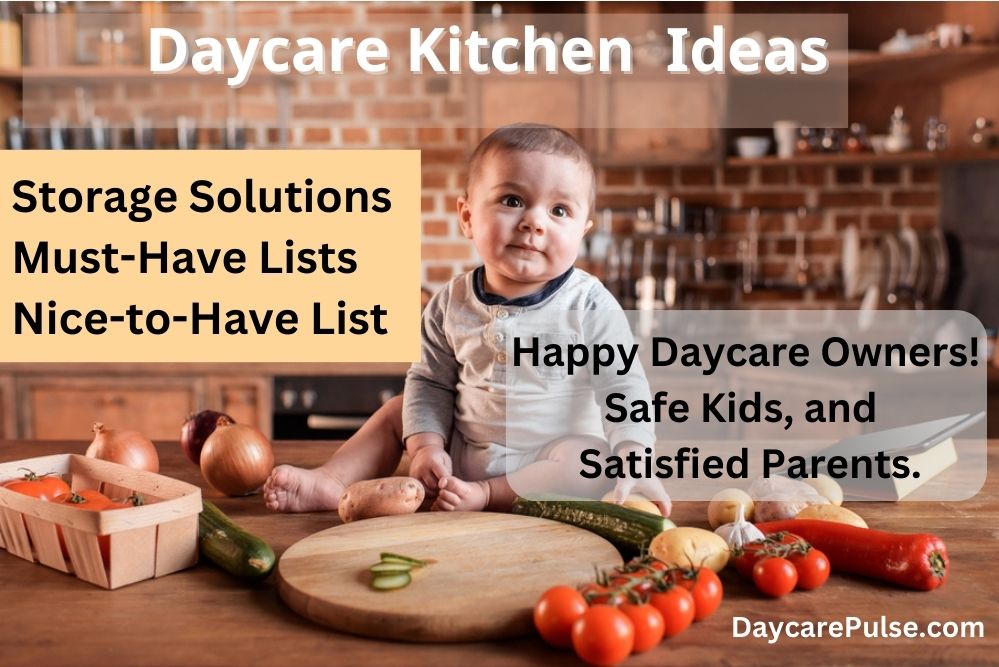
9 Ideas for Efficient Daycare Kitchen Design
I know how important it is to create a kitchen that’s not only inspiring but also super kid-friendly. Let’s chat about some fantastic ideas to totally transform your daycare kitchen! We’re talking about switching things up in a way that the little ones will absolutely love. And the best part?
We’ll sprinkle in heaps of creativity and make sure everything is super functional, too. Let’s make that kitchen a place where both fun and learning mix seamlessly! 🌈🍽️
Layout and Design Ideas for Daycare Kitchen
Here are some ideas related to the layout and design of your daycare kitchen.
Idea #1: Efficient Traffic Flow and Organization
Efficient traffic flow is essential in a daycare kitchen. Ample countertop area near the pantry for food prep. The cooking area should be equipped with appliances, a spacious sink for washing, and storage for safety through refrigeration and cabinets.
Designing a home daycare kitchen prioritizes child-friendly accessibility. Countertop height and appliance choices consider kids’ safety. Lower sinks encourage participation, while safety measures like latches and gates restrict access to hazards.
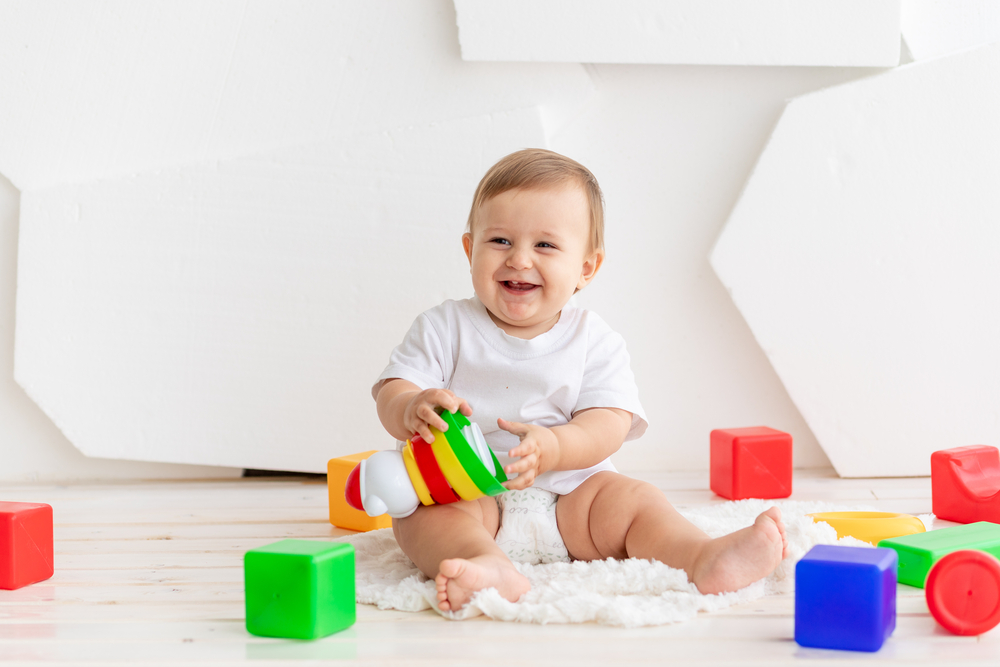
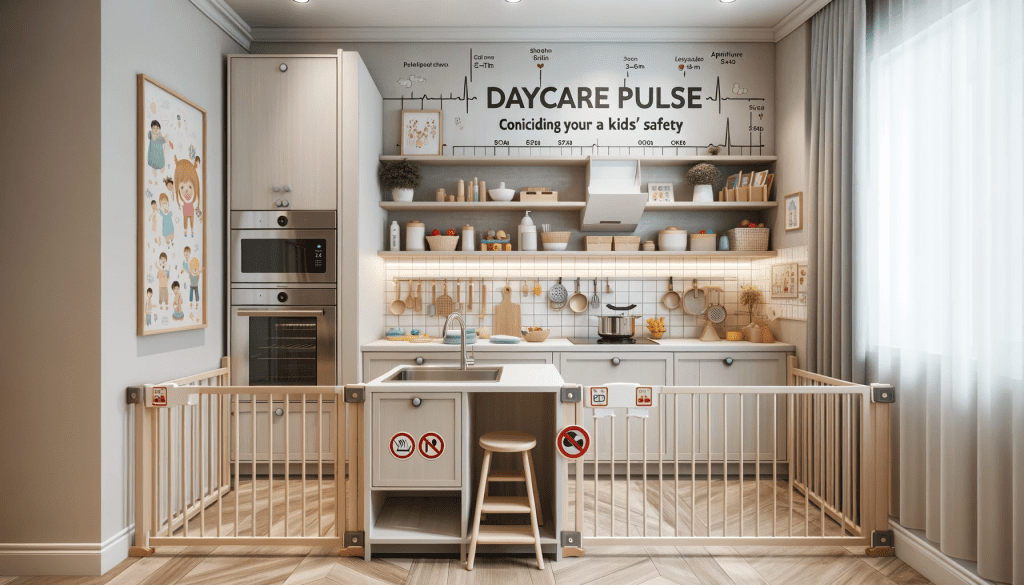
Idea #2: Age-Appropriate Furniture and Fixtures
In a daycare kitchen, lower countertops and sinks are vital for child involvement. They promote independence and aid staff supervision. The interior design inspiration enhances safety and comfort for both kids and staff.
In-home daycare dining, an Infant-sized table, shelves, chairs, and a set of children’s favorite plates and dishes are crucial. They increase comfort, independence, and fine motor skills. Sturdy, easy-to-clean, and safe furniture with engaging designs is ideal.
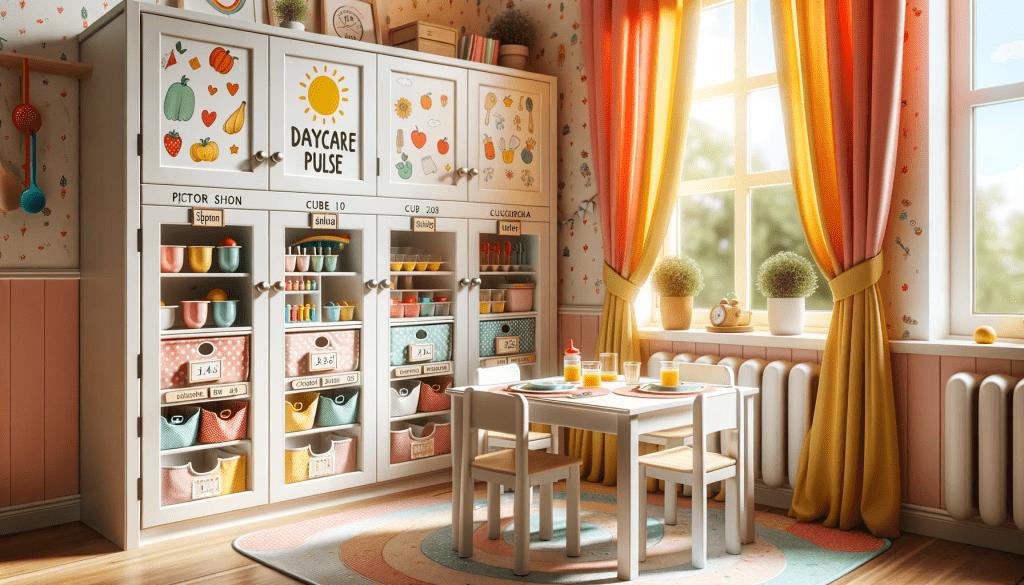
Idea #3: Proper Ventilation and Lighting
Adequate ventilation is key to improving the daycare kitchen and inspiring parents and their children. It expels odors, controls moisture, and maintains air quality. Cleanliness, health, and safety are ensured through proper ventilation systems.
Daycare kitchens thrive with ample lighting. Natural light fosters well-being and energy savings, while artificial light ensures visibility. Thoughtful fixture choice boosts aesthetics and safety for an efficient, calm, pleasurable environment.
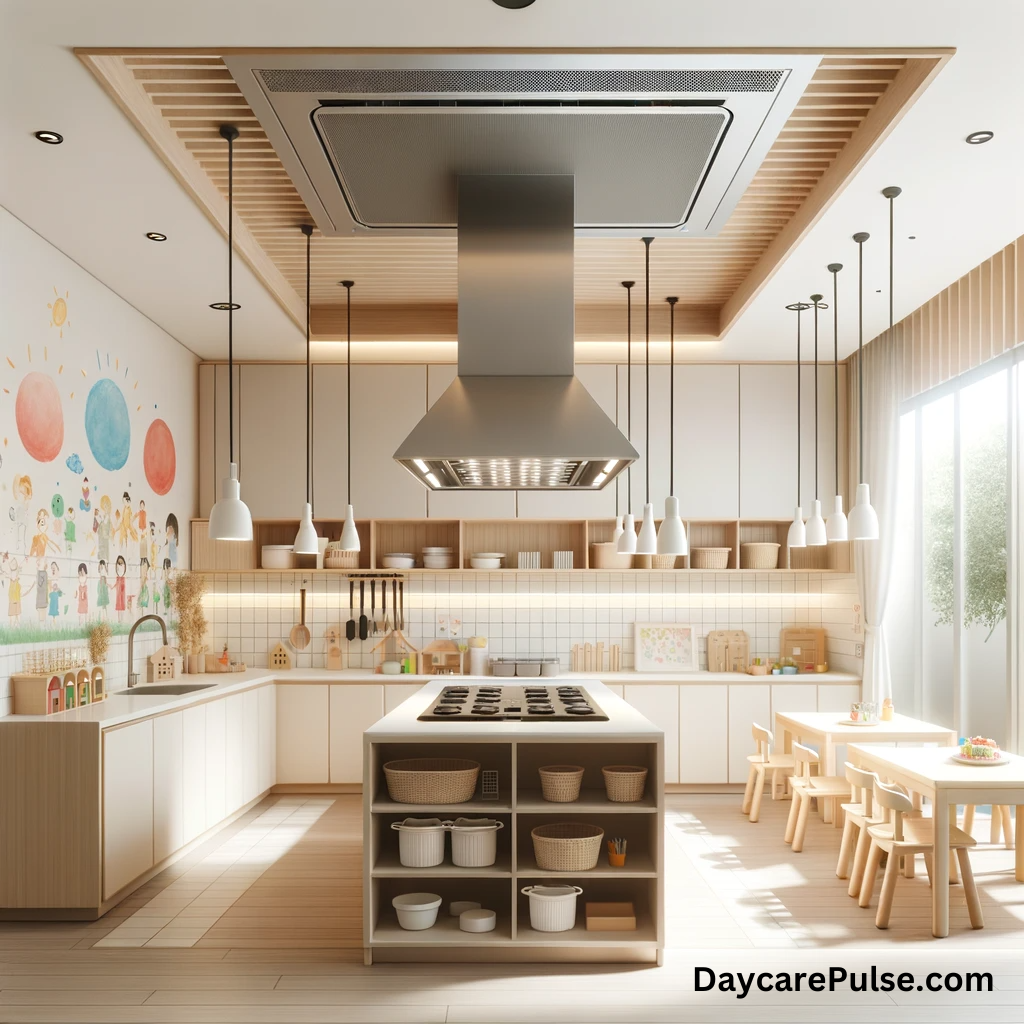
Safety and Sanitation Ideas for Daycare Kitchen
Here are some ideas related to the safety & hygiene of your daycare kitchen.
Idea #4: Hygiene and Cleanliness
Hygiene is paramount in daycare kitchens. Scheduled cleaning prevents contamination, protecting kids.
In daycare settings, training staff in hygiene is vital. Proper handwashing curbs illness spread. Food handling education covers cooking, storage, and cross-contamination prevention.
High standards for hygiene and cleanliness in a home daycare setup are non-negotiable, playing a crucial role in maintaining a healthy and safe environment for kids.
This involves meticulously neat surfaces, sanitized toys, and regular staff training on hygienic practices, all of which are cardinal components of any responsible home daycare setup.
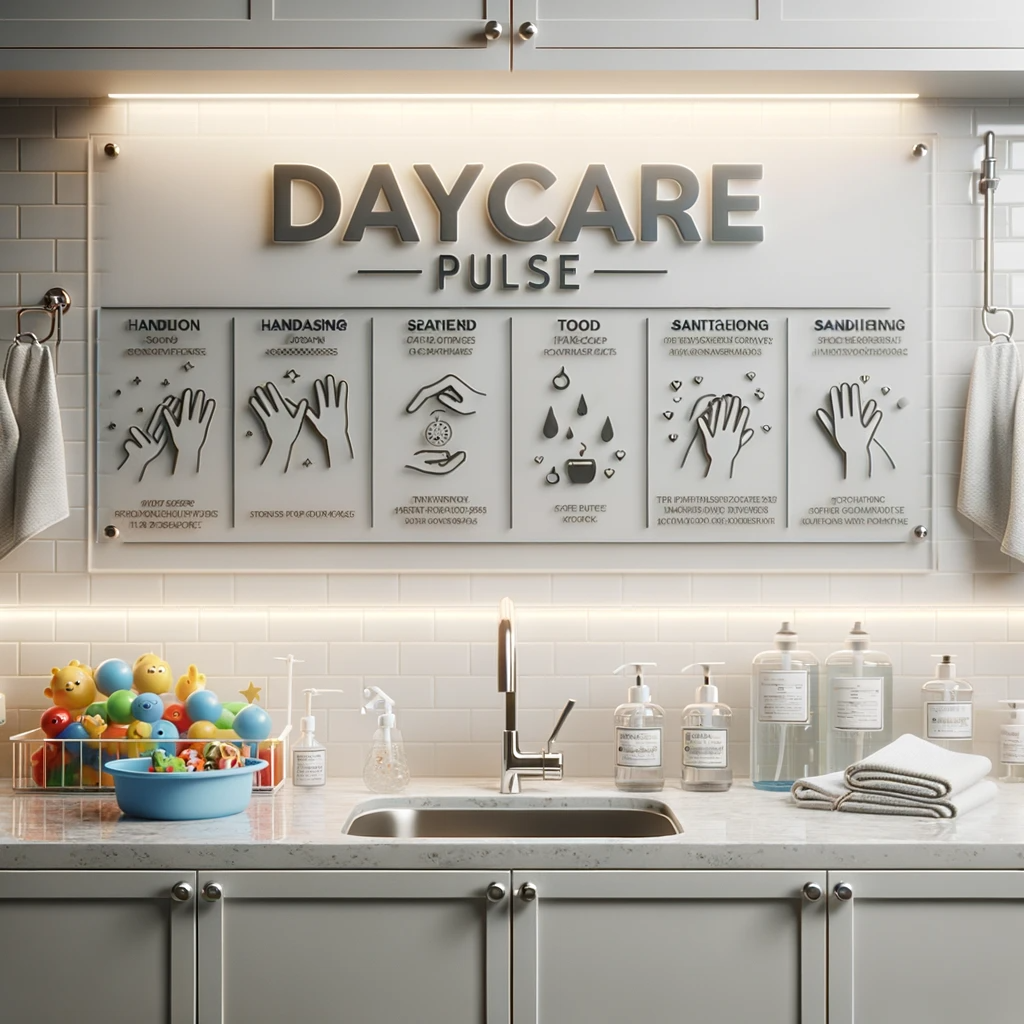
Idea #5: Child-Safe Materials
Stuff matters in daycare kitchens. Choose non-toxic, durable options. Quartz counters and tile flooring ensure longevity and cleanliness. Safety and hygiene are maintained with easy-to-clean surfaces.
Daycare kitchen safety requires childproof locks. They prevent access to hazards and reassure staff. Ensure functionality by regular setting and checks for peace of mind. Preventive measures are key in home daycare settings.
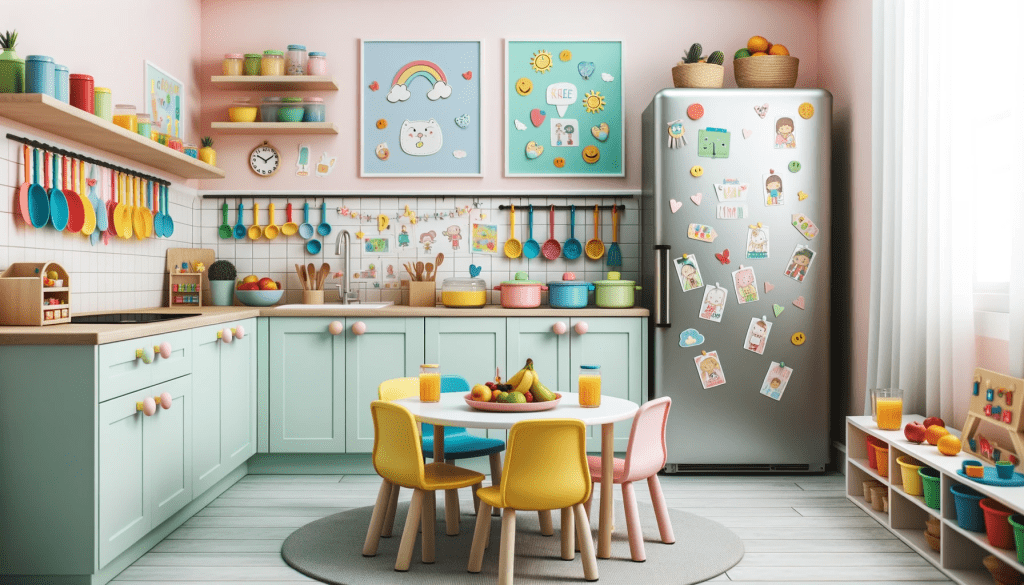
Idea #6: Health and Safety Regulations
Compliance with daycare kitchen guidelines is vital. Regulations cover food safety, equipment, and more. Regular checks ensure adherence to quality and infant safety.
Regular inspections ensure safe home daycare kitchens. Health departments or inspectors assess cleanliness, food practices, and more. Identifying issues early and demonstrating a commitment to high standards are outcomes.
Functional Equipment and Appliances Ideas for Daycare Kitchen
Here are some ideas related to the equipment & appliances of your daycare kitchen.
Idea #7: Child-Friendly Utensils and Equipment
Daycare kitchens benefit from toddler-friendly utensils. Scaled down, they aid motor skills and independence. Safety and consideration for kid’s needs are demonstrated by their use.
Interesting kitchen tools enhance home daycare meal times. Colors and shapes captivate kids, making learning enjoyable. Safe, non-toxic materials are essential for fostering curiosity and setting positive eating habits.
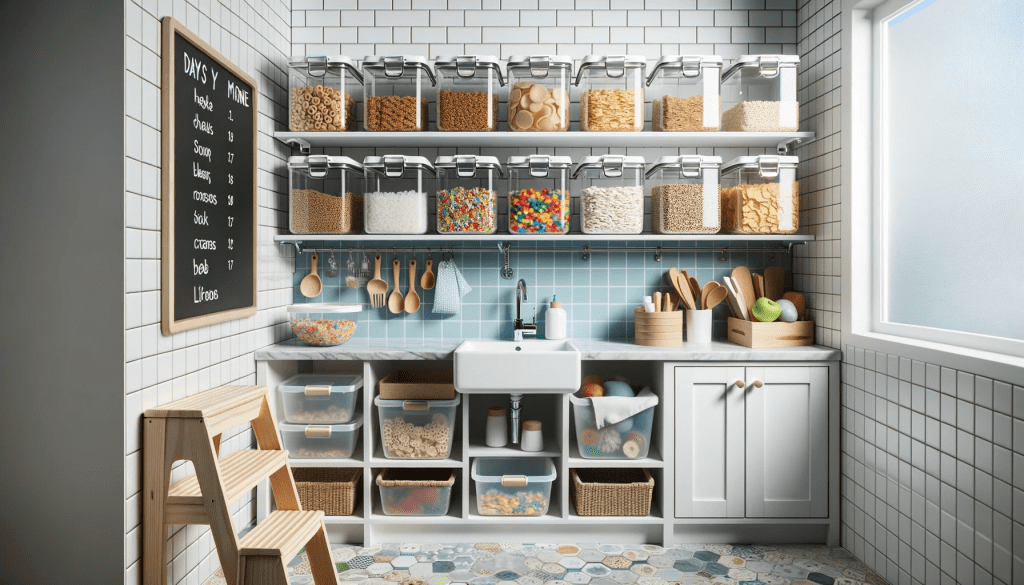
Idea #8: Commercial-Grade Appliances for Efficiency
Industrial appliances are daycare must-haves. Heavy-duty stoves, ovens, and spacious refrigerators streamline meal prep. Regular maintenance upholds safety and food quality.
Microwaves are daycare kitchen staples. Swift reheating and portion control adapts to adults’ needs. Sensible use ensures safety and convenience.
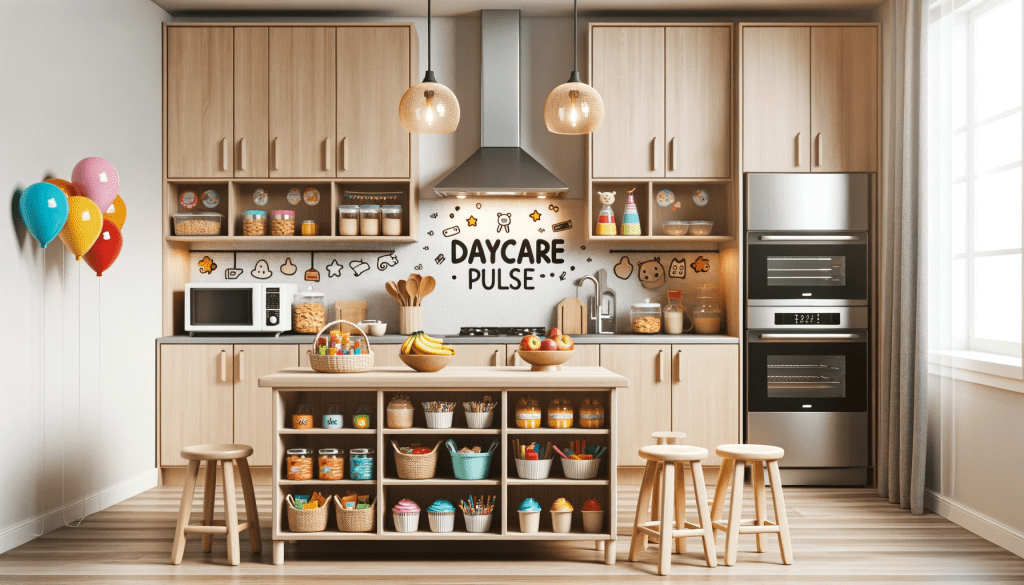
Idea #9: Ample Storage Solutions
Shelving, cabinets, and drawers are vital for structured daycare kitchens. Efficient storage aids ingredient categorization and quick meal prep. Safety and efficiency are enhanced by reducing search time and preventing accidents in daycare or home.
Daycare kitchen efficiency requires clear container labeling. Labels aid food identification, dietary needs, and waste reduction. Ensure legibility, durability, and comprehensibility for optimal impact.
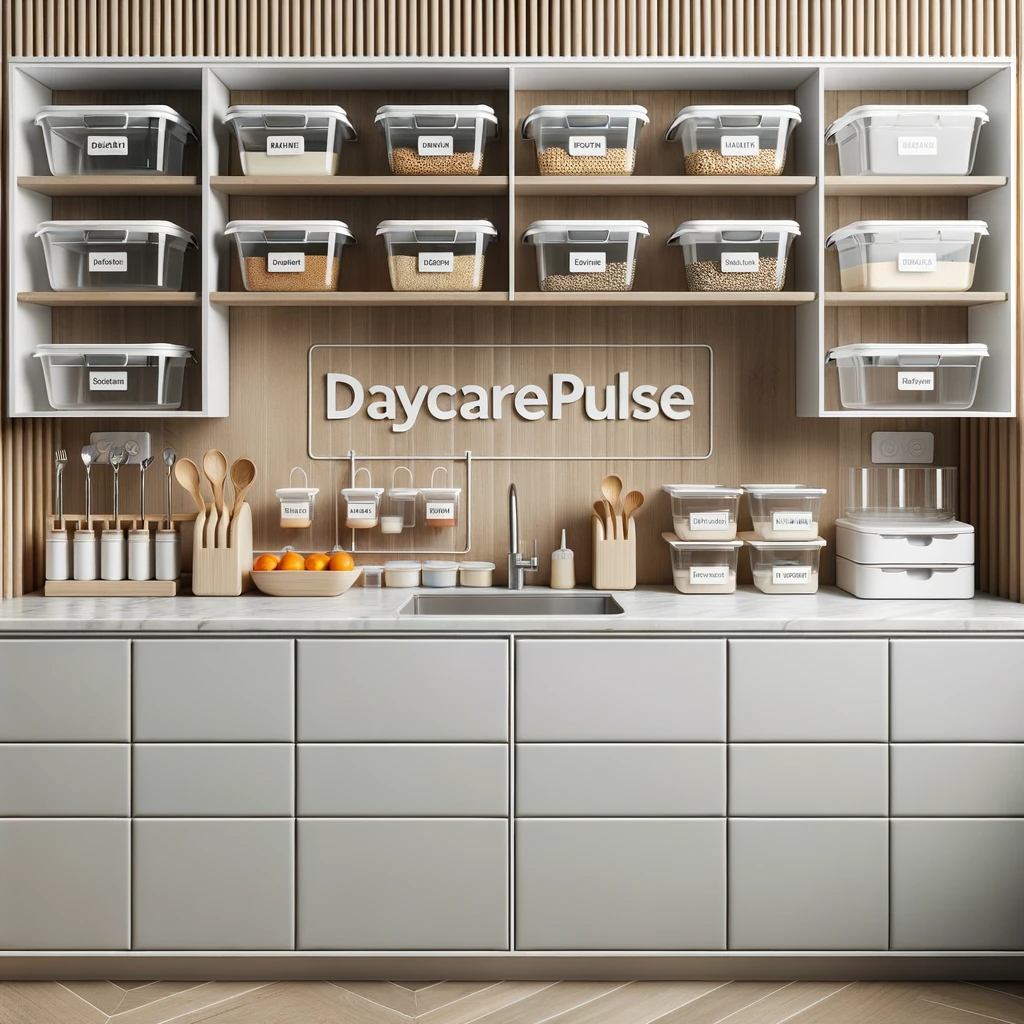
Daycare Kitchen To-Buy-List
I am listing below some of the must-have and Nice-to-have items for your daycare kitchen.
Must-Have List for a Daycare Kitchen
A well-equipped daycare kitchen necessitates certain essentials to ensure a safe, efficient, and child-friendly environment.
Here, we’ll discuss the ‘Must-Have’ items that form the backbone of any daycare kitchen.
- Child-Safe Utensils: Child-sized utensils are designed for small hands, empowering children to actively participate in meal preparation.
- Hygienic Surfaces and Materials: Non-toxic, easy-to-clean surfaces and materials that maintain impeccable hygiene and safety standards.
- Age-Appropriate Seating: Children-sized tables, shelves and chairs, encouraging comfortable dining experiences and fostering a sense of independence.
- Safe Food Storage Solutions: Refrigeration units and pantry shelves to keep ingredients fresh and organized, minimizing food waste and ensuring easy access.
- Extra Shelves: While the must-have list includes appropriate shelves for the kids, additional shelves for staff use could be a valuable addition.
These extra shelves can be utilized for storing various kitchen tools and supplies, keeping them out of the reach of children but within easy access for staff members.
Nice-to-Have List for a Daycare Kitchen
Include tools like safe menu boards and child-friendly artwork, allowing little ones the ability to participate more fully in food preparation under safe supervision.
- Interactive Menu Boards: Digital or tactile boards displaying daily menus and nutritional information, sparking curiosity and anticipation.
- Interactive Learning Shelves: Enhance your daycare kitchen with vibrant educational shelves, transforming it into a space for both meals and interactive learning art.
- Child-Friendly Artwork: Colorful murals, decals, or stickers that infuse the space with creativity and captivate young imaginations.
- Engaging Cooking Stations: Mini cooking stations or learning corners where children can engage in culinary activities and explore flavors.
- Multicultural Cooking Aids: Ingredients and utensils that introduce children to diverse cuisines, promoting cultural awareness and appreciation.
Storage Solutions for Daycare Kitchens
Interactive elements like engaging cooking stations and digital menus merge education with entertainment. Lastly, the ideas for clever storage solutions, such as labeled bins and magnetic strips, lead to an organized and efficient kitchen environment.
- Container Wonderland: Utilize a variety of clear, labeled containers to store ingredients, snacks, and utensils. Stackable bins offer vertical storage, maximizing space without sacrificing accessibility.
Brightly colored containers categorize things and add a splash of visual appeal. - Magnetic Charm: Magnetic strips on walls or inside cabinets are perfect for hanging metal utensils and knives. Magnetic spice jars keep seasonings within sight while saving valuable counter area.
- Drawer Magic: Customize drawers with dividers to neatly organize utensils, cutlery, and cooking tools. Trays within drawers help segregate smaller items like measuring spoons, bottle caps, and kitchen gadgets and pick them up when needed without any mess up.
- Labeling Enchantment: Labels, whether chalkboard or colorful decals, ensure every container finds its rightful place. Include illustrations for non-readers to identify where items belong easily.
- Vertical Oasis: Use hooks and pegs to hang pans, ladles, and other frequently used tools on walls or inside cabinet doors. Hanging baskets create vertical storage for fruits, vegetables, or cloth napkins.
- Tucked-Away Magic: Utilize the space beneath countertops for pull-out trays or baskets, housing cutting boards, baking sheets, and large pots. Hidden compartments within island seating or under benches cleverly store rarely-used items.
- Dynamic Rotation: Implement a rotation system for toys, utensils, and art supplies to maintain novelty and prevent clutter. Labeled bins for each rotation make clean-up and organization a collaborative game.
The Importance of an Efficient Daycare Kitchen
Stimulating environments are integral to child development, as they foster innovativeness, curiosity, and growth. Creating a space that nurtures exploration and learning is key to fostering growth and development.
Having an efficient daycare kitchen is essential for an environment that promotes learning and exploration.
An organized, well-equipped space provides children with the tools to engage in fun activities while teaching them responsibility and independence.
A safe, clean kitchen can teach them how to cook, prepare food properly, and care for their surroundings. An efficient home daycare kitchen is key to creating a safe and stimulating environment, from maintaining hygiene standards to instilling healthy habits.
The benefits of having an efficient daycare kitchen are not limited to the children. For caregivers, it means fewer distractions from their duties as they can easily find what they need and put things back in their place with ease.
Investing in child-friendly artwork and interactive stations enriches the culinary learning experience. In this way, toddlers not only gain practical skills and knowledge but also values like teamwork and responsibility.
A well-maintained kitchen encourages collaboration among staff.
By prioritizing hygiene, safety, and creativity, a daycare kitchen becomes a hub of imagination and discovery.
Frequently Asked Questions
How can I make my daycare kitchen more child-friendly and safe?
To make your daycare kitchen more child-friendly and safe, utilize a variety of safety equipment like baby gates, drawer locks and refrigerator locks. Install cabinets with soft close hinges to avoid potential injuries from slamming doors.
Make sure all cleaning supplies are stored securely away in locked cabinets or drawers. Invest in non-toxic, eco-friendly cleaning supplies that are safe for use around children. Finally, implement clear labeling to ensure that everyone knows where items belong and how to put them back correctly.
What are some budget-friendly kitchen makeover ideas for daycare centers?
Budget-friendly kitchen makeover ideas include introducing interactive menu boards, educational shelves and child-friendly artwork. Utilize clever storage solutions like labeled bins and magnetic strips for efficient organization.
Install vertical shelving to maximize space without sacrificing accessibility. Finally, consider implementing a rotation system for toys, utensils, and art supplies to maintain novelty and prevent clutter.
Can you recommend eco-friendly practices for a daycare kitchen?
There are a variety of eco-friendly practices that can be implemented in a daycare kitchen. Utilize energy-saving appliances and replace light bulbs with LED lights to reduce energy consumption. Make sure all cleaning supplies are non-toxic and biodegradable.
Implement recycling bins for organic waste or composting systems to reduce landfill waste. Invest in reusable containers for food and snacks to reduce plastic waste. Finally, encourage children to help clean up after meals to instill environmental responsibility.
What are some tips for teaching safety in the kitchen?
To teach safety in the kitchen, start by introducing age-appropriate tasks like washing vegetables or setting the table. Make sure all cleaning supplies are stored securely away and out of reach. Clearly mark any off-limits items and educate children about the dangers of handling sharp objects or hot surfaces.
Finally, explain and demonstrate proper techniques for using kitchen tools and equipment, such as how to properly cut vegetables or mix ingredients. Providing guidance on safety measures is a critical aspect of teaching children to handle kitchen tasks responsibly.
Conclusion
In conclusion, creating a daycare kitchen that fosters learning, safety, and fun is a multi-faceted endeavor.
By prioritizing hygiene and safety, selecting age-appropriate seating and utensils, and implementing clever storage solutions, we can nurture an area that encourages children to explore.
Interactive features and storage solutions enhance the kitchen’s functionality. An organized, well-maintained kitchen benefits both children and caregivers. Invest in a space that facilitates growth, independence, and culinary education.
